How to Reduce Claim Denials in Your Revenue Cycle
In this blog, we will walk through the most common reasons claims get denied, and the best practices your team can implement to prevent them and protect your revenue cycle.

Did you know that claim denials cost U.S. healthcare providers an estimate of $262 billion annually. That is a staggering amount of lost revenue that could have been prevented if there were preventative measures in place.
Claim denials typically happen due to an error on a claim that was sent to the insurance provider. When these denials occur, it's not just a lost reimbursement. It also pulls staff away from processing new claims to fix old ones, draining time, resources, and morale.
Before you give up now, there is some good news, most denials are avoidable. In today's blog, we will walk through the most common reasons claims get denied, and the best practices your team can implement to prevent them and protect your revenue cycle.
Impact of Denials on the Revenue Cycle
So what is the real cost of denied claims in the long run? When your organization gets denied there are direct and indirect costs. Directly your organization could get delayed reimbursements or no reimbursement at all, impacting the cashflow and bottom line.
But the Indirect costs are just as damaging. When a claim is denied, staff must stop working on new submissions to correct and resubmit the old ones. This extra administrative work drains time, increases labor costs, and contributes to employee burnout. It also slows down the entire billing process and creates avoidable bottlenecks in your revenue cycle.
That is why reducing denials isn't just about fixing mistakes, but is also about building a more efficient and stable organization.
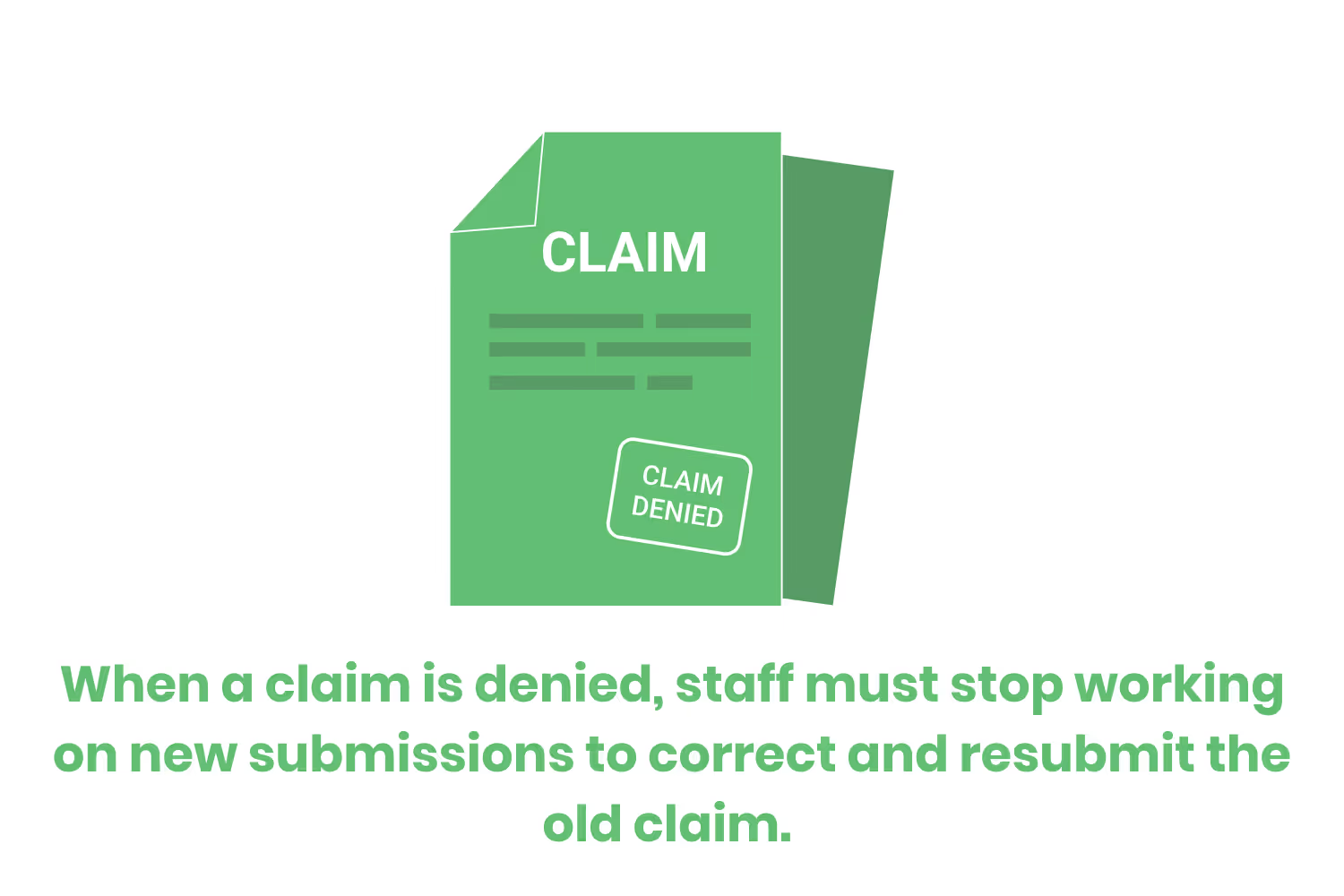
What are the Common Reasons for Claim Denials?
To effectively reduce denials, it’s crucial to first identify the root causes behind them. Let’s take a brief overview of the most common reasons for denials:
Reason 1: Incorrect or incomplete patient information
Even if it is the smallest of errors in the patient details can cause a denial code. Errors can range from misspelled names, incorrect birthday information, to wrong insurance ID numbers. Don’t worry it doesn't end there, pretty much every piece of information your office collects if wrong could trigger a denial.
Reason 2: Missing or invalid prior authorization
Some procedures require something called prior authorization, meaning the provider must get approval from the insurance company before providing the service. If this step is skipped the claim is often denied automatically because you can not ask for authorization after the service has been rendered.
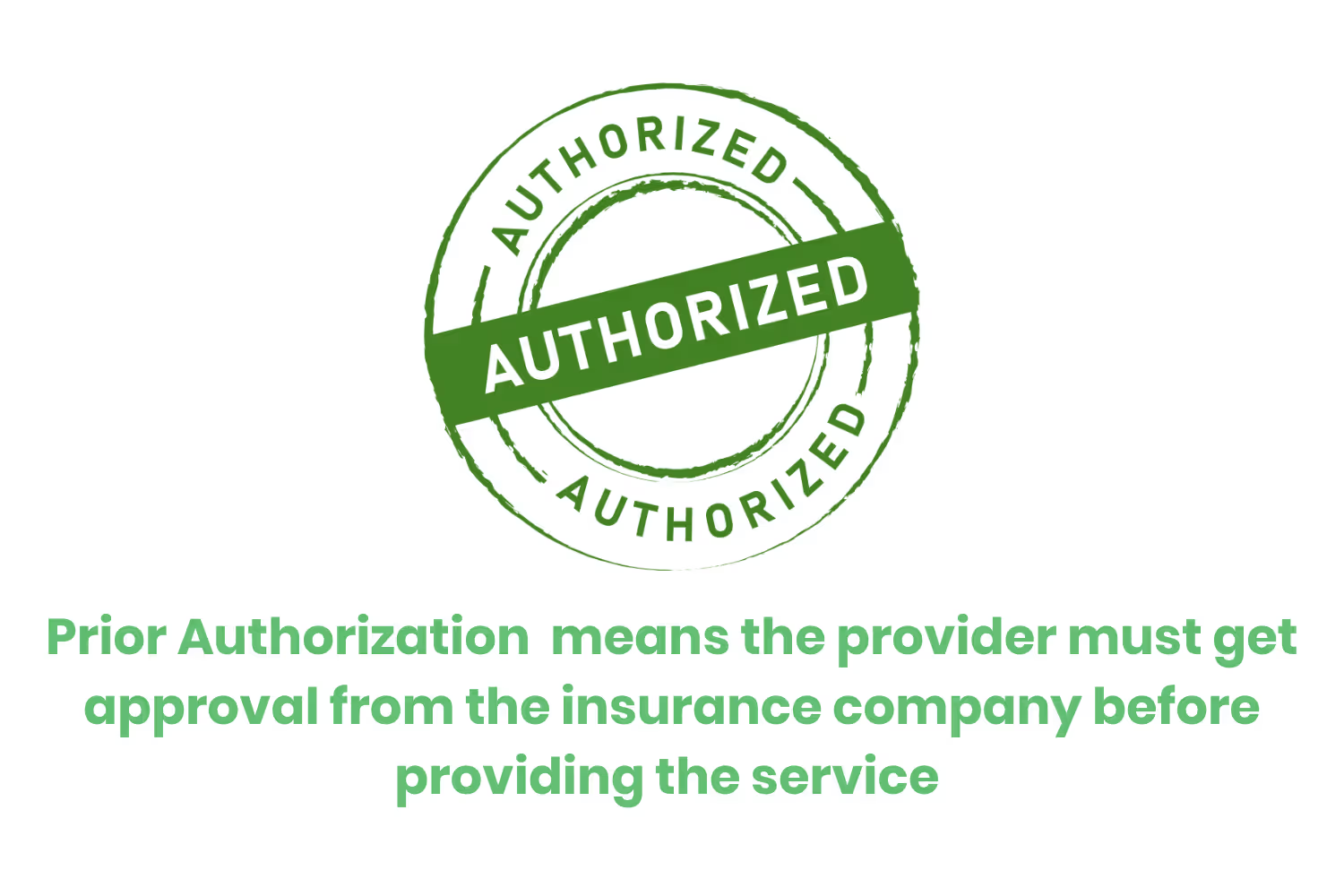
Reason 3: Eligibility or coverage issues
Every patient's insurance policy will differ including their eligibility and coverage requirements. What is covered for one patient might be excluded for a different patient even if they have the same provider. That is why it is so crucial to verify the details every visit, not just rely on past visits.
Reason 4: Coding errors (CPT, ICD-10 mismatches)
When filing a claim your medical billing team must use accurate CPT and ICD 10 codes, to help describe what happened and why. If the team miscodes the claim the insurance provider may misinterpret the service that happened.
Reason 5: Lack of medical necessity documentation
Insurance companies are not just going to take the provider's word that the service was necessary. They are going to want clinical documentation to help back up the provider's decision for the service being provided. If the provider does not submit all of the correct documentation the insurance provider is only seeing half the story. Which can lead to them making an uninformed decision.
Reason 6: Duplicate claim submission
This by far is one of the easiest not to mention preventable ways a claim can get denied. Duplicate submissions often happen when there is a lack of conversation within the provider's office or billing team. If a claim is submitted more than once for the same service, most payers will just automatically deny it entirely.
Reason 7: Timely filing deadline missed
Every insurance provider has a strict timeline for when the provider's office needs to have their claim submitted by. If your claim isn't filed within that window, it will likely be denied automatically, regardless of accuracy. These deadlines exist to help streamline processing and ensure that approvals or denials are issued efficiently.
Ensuring your organization's team has a basic understanding of why things get denied will help when developing tactics to reduce denials.
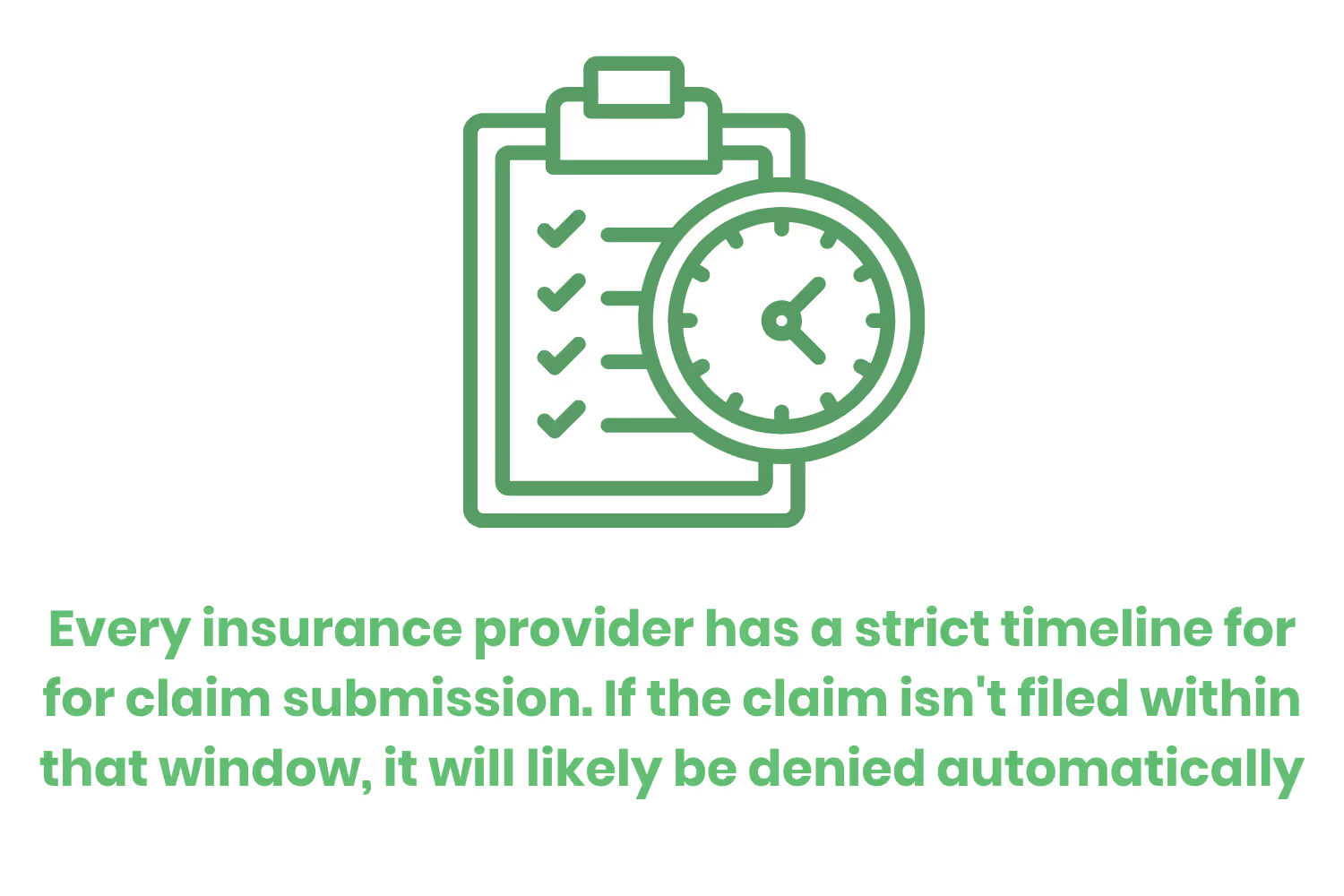
How Can Healthcare Organizations Reduce Claim Denials?
Now that you have a better understanding of what some of the reasons for denials are, let's shift gears and talk about how to reduce them.
Method 1: Importance of Medical Coding and Billing Accuracy
No matter how long the patient has been seen at the physician's office their insurance and information should be verified every time. Patients' insurance or information can change fast that will affect the approval process. There are eligibility tools that can help aid physicians to see if the patient is eligible for certain services.
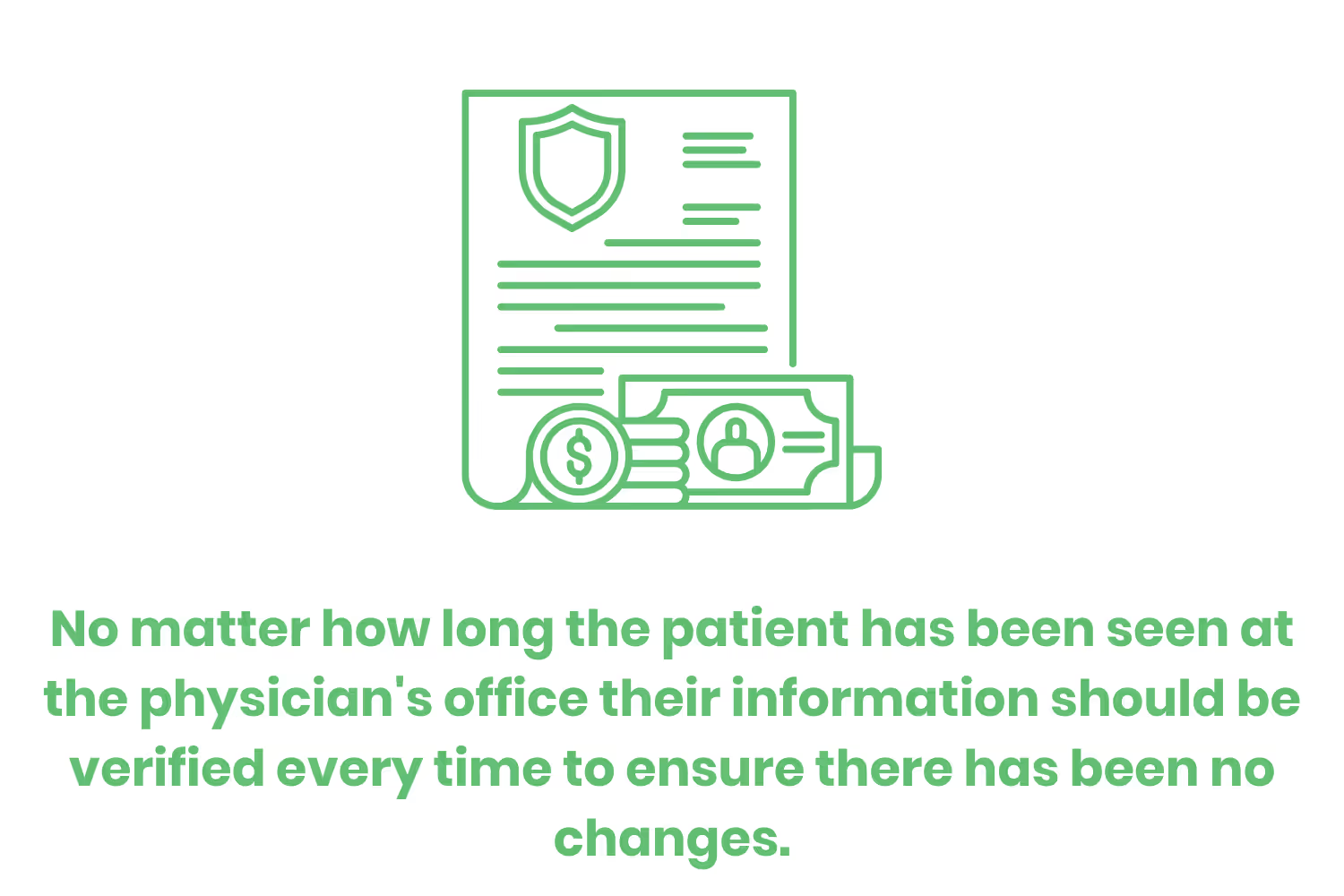
Method 2: Utilizing Claim Scrubbers for Efficient Claims
Clearinghouses are one of the best resources your organization can take advantage of. When your insurance provider is done with a claim before sending it to the insurance company it will go to the Clearinghouse. The Clearinghouse will review the entire claim, and patient documentation and search for any errors. If they find one, they will return it to the provider's office with details of what was wrong and how you fix it.
Method 3: Stay Updated on Payer Rules and Policy Changes
Payers policies and rules will change, they typically make changes once a year but it can occur more. Utilizing a resource library or a cheat sheet of all the codes can also be useful to ensure the right codes are being optimized.
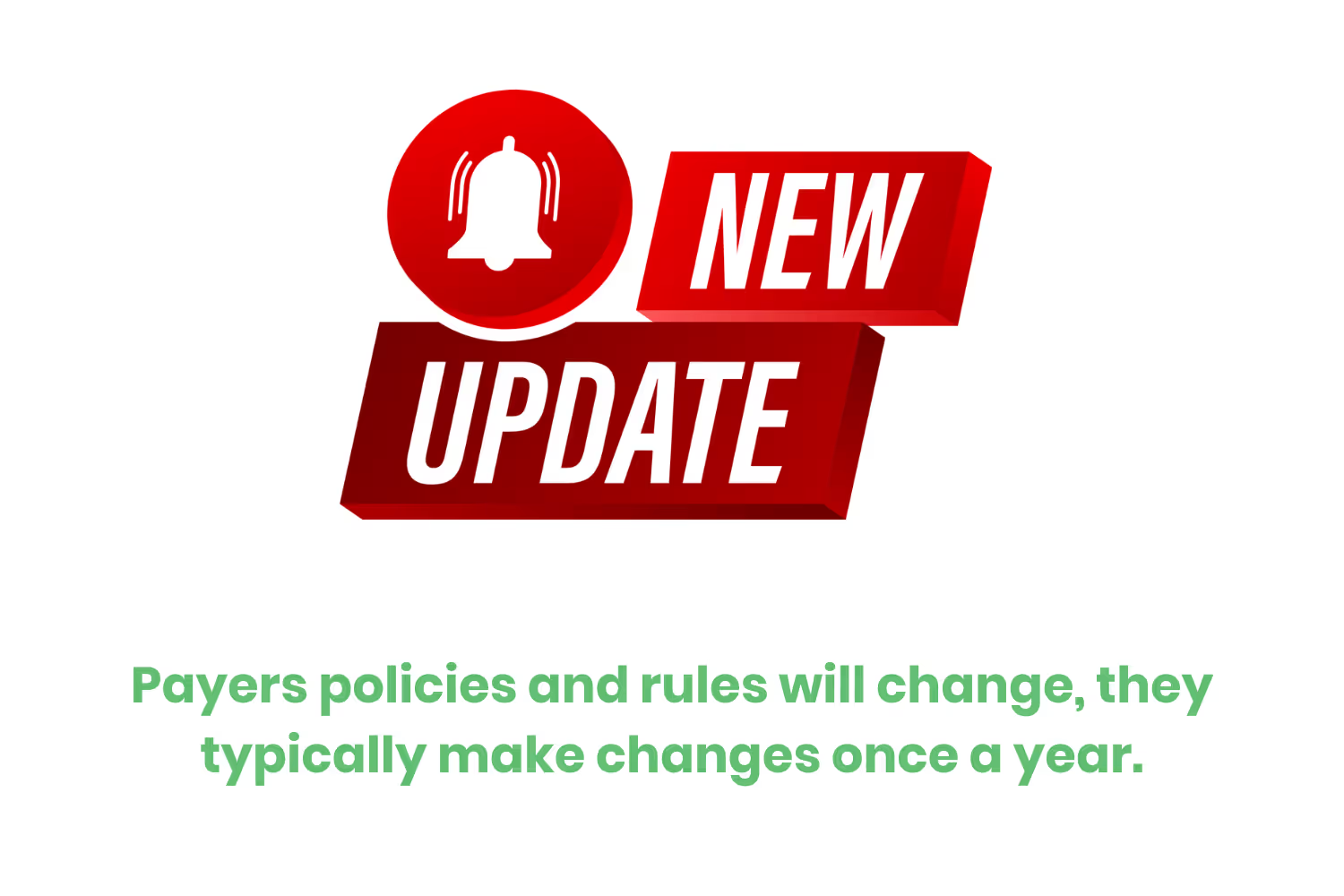
Method 4: Invest in Strong Coding and Documentation Practices
Half of the battle when creating claims is just using the correct codes, wrong code? Means an immediate denial with no additional information. To ensure employees are using the correct code, perform training refreshers focused on coding best practices and payer updates. This will help make sure everyone is up to date with the new or changed codes.
Method 5: Review Denial Trends and Take Action
With a number of organizations submitting claims, there will be an obvious pattern to help identify trends. Reviewing your denial rates and trends will help pinpoint exactly where your organization is facing the most challenges. Allowing your organization to address issues before they happen.
How Can Eligibility Verification Help Prevent Claim Denials?
Eligibility verification is one of the most effective front-line tools for preventing claim denials. Especially when you consider that eligibility and benefit verification errors account for up to 25% of claim denials
By confirming a patient's insurance details before every visit, your team can avoid issues related to coverage, policy lapses, or benefit limits. Even long-time patients can have changes in their insurance plans, networks, or copay requirements. If your team misses any of those changes, it would result in a denied claim.
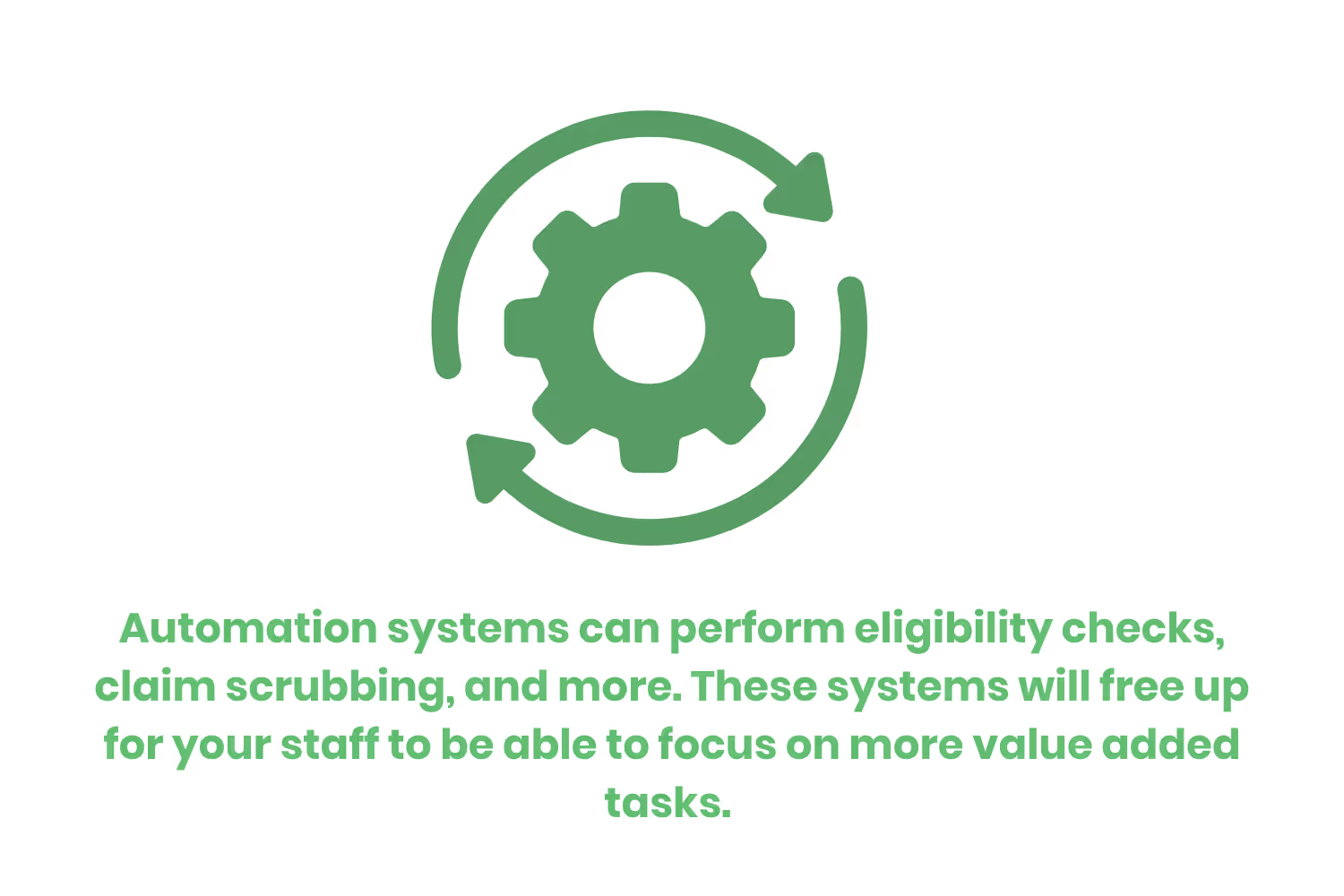
Automated eligibility verification tools (like ours) allow staff to quickly check a patient’s insurance status in real time. These tools can confirm whether a patient is currently active, what services are covered under their plan, if there are any referral or prior authorization requirements, and if there are any co-pays or deductibles due. By identifying potential red flags early, your team can resolve issues before services are rendered reducing the risk of costly denials and ensuring the claim process is as smooth as possible.
Incorporating eligibility verification into your check-in process not only protects your revenue, but also enhances the patient experience by avoiding surprise bills or delays in care.
How Can Healthcare Providers Automate Their Claims Process?
With technology becoming more prominent in healthcare, automation is no longer a nice-to-have, it’s a must-have. Automating key steps in the claims process can drastically reduce human error, speed up reimbursements, and protect your staff from burnout caused by repetitive tasks.
One of the most impactful automation tools is an electronic claims management system that handles everything from eligibility checks to claim submission and status tracking. These platforms can automatically scrub claims for common errors, check for missing data, and flag issues before the claim ever reaches the payer. That means fewer denials and faster payments
As I mentioned earlier, real-time eligibility verification is another powerful tool that removes the guesswork from coverage checks. With just a few clicks, staff can confirm a patient's active insurance, plan coverage, copay requirements, and authorization needs. And all of this happens before the appointment even starts.
Other helpful automation features include:
- Automated claim scrubbing to catch coding mismatches or missing information.
- Batch claim submission to send multiple claims at once, reducing processing time.
- Denial management dashboards that help staff identify trends and prioritize rework efforts.
- Auto-resubmission tools that streamline the correction and resubmission of denied claims.
By implementing these tools, your team can spend less time on manual data entry and more time on strategic tasks that support the patient experience and drive revenue. In short, automation isn’t just about doing things faster, it’s about doing them smarter.
Addressing Denials and Improving Claim Approval Rates
Denial prevention isn't just a time saver; it's essential to strong cycle management management. Understanding the root causes of claim denials is the first step, but knowledge alone isn't enough.
To significantly reduce your denial rate and improve cash flow, your organization must take action by implementing targeted, proactive strategies. The more you streamline your medical billing process and invest in prevention, the most productive and profitable your revenue cycle becomes.
Emphasize your product's unique features or benefits to differentiate it from competitors
In nec dictum adipiscing pharetra enim etiam scelerisque dolor purus ipsum egestas cursus vulputate arcu egestas ut eu sed mollis consectetur mattis pharetra curabitur et maecenas in mattis fames consectetur ipsum quis risus mauris aliquam ornare nisl purus at ipsum nulla accumsan consectetur vestibulum suspendisse aliquam condimentum scelerisque lacinia pellentesque vestibulum condimentum turpis ligula pharetra dictum sapien facilisis sapien at sagittis et cursus congue.
- Pharetra curabitur et maecenas in mattis fames consectetur ipsum quis risus.
- Justo urna nisi auctor consequat consectetur dolor lectus blandit.
- Eget egestas volutpat lacinia vestibulum vitae mattis hendrerit.
- Ornare elit odio tellus orci bibendum dictum id sem congue enim amet diam.
Incorporate statistics or specific numbers to highlight the effectiveness or popularity of your offering
Convallis pellentesque ullamcorper sapien sed tristique fermentum proin amet quam tincidunt feugiat vitae neque quisque odio ut pellentesque ac mauris eget lectus. Pretium arcu turpis lacus sapien sit at eu sapien duis magna nunc nibh nam non ut nibh ultrices ultrices elementum egestas enim nisl sed cursus pellentesque sit dignissim enim euismod sit et convallis sed pelis viverra quam at nisl sit pharetra enim nisl nec vestibulum posuere in volutpat sed blandit neque risus.

Use time-sensitive language to encourage immediate action, such as "Limited Time Offer
Feugiat vitae neque quisque odio ut pellentesque ac mauris eget lectus. Pretium arcu turpis lacus sapien sit at eu sapien duis magna nunc nibh nam non ut nibh ultrices ultrices elementum egestas enim nisl sed cursus pellentesque sit dignissim enim euismod sit et convallis sed pelis viverra quam at nisl sit pharetra enim nisl nec vestibulum posuere in volutpat sed blandit neque risus.
- Pharetra curabitur et maecenas in mattis fames consectetur ipsum quis risus.
- Justo urna nisi auctor consequat consectetur dolor lectus blandit.
- Eget egestas volutpat lacinia vestibulum vitae mattis hendrerit.
- Ornare elit odio tellus orci bibendum dictum id sem congue enim amet diam.
Address customer pain points directly by showing how your product solves their problems
Feugiat vitae neque quisque odio ut pellentesque ac mauris eget lectus. Pretium arcu turpis lacus sapien sit at eu sapien duis magna nunc nibh nam non ut nibh ultrices ultrices elementum egestas enim nisl sed cursus pellentesque sit dignissim enim euismod sit et convallis sed pelis viverra quam at nisl sit pharetra enim nisl nec vestibulum posuere in volutpat sed blandit neque risus.
Vel etiam vel amet aenean eget in habitasse nunc duis tellus sem turpis risus aliquam ac volutpat tellus eu faucibus ullamcorper.
Tailor titles to your ideal customer segment using phrases like "Designed for Busy Professionals
Sed pretium id nibh id sit felis vitae volutpat volutpat adipiscing at sodales neque lectus mi phasellus commodo at elit suspendisse ornare faucibus lectus purus viverra in nec aliquet commodo et sed sed nisi tempor mi pellentesque arcu viverra pretium duis enim vulputate dignissim etiam ultrices vitae neque urna proin nibh diam turpis augue lacus.


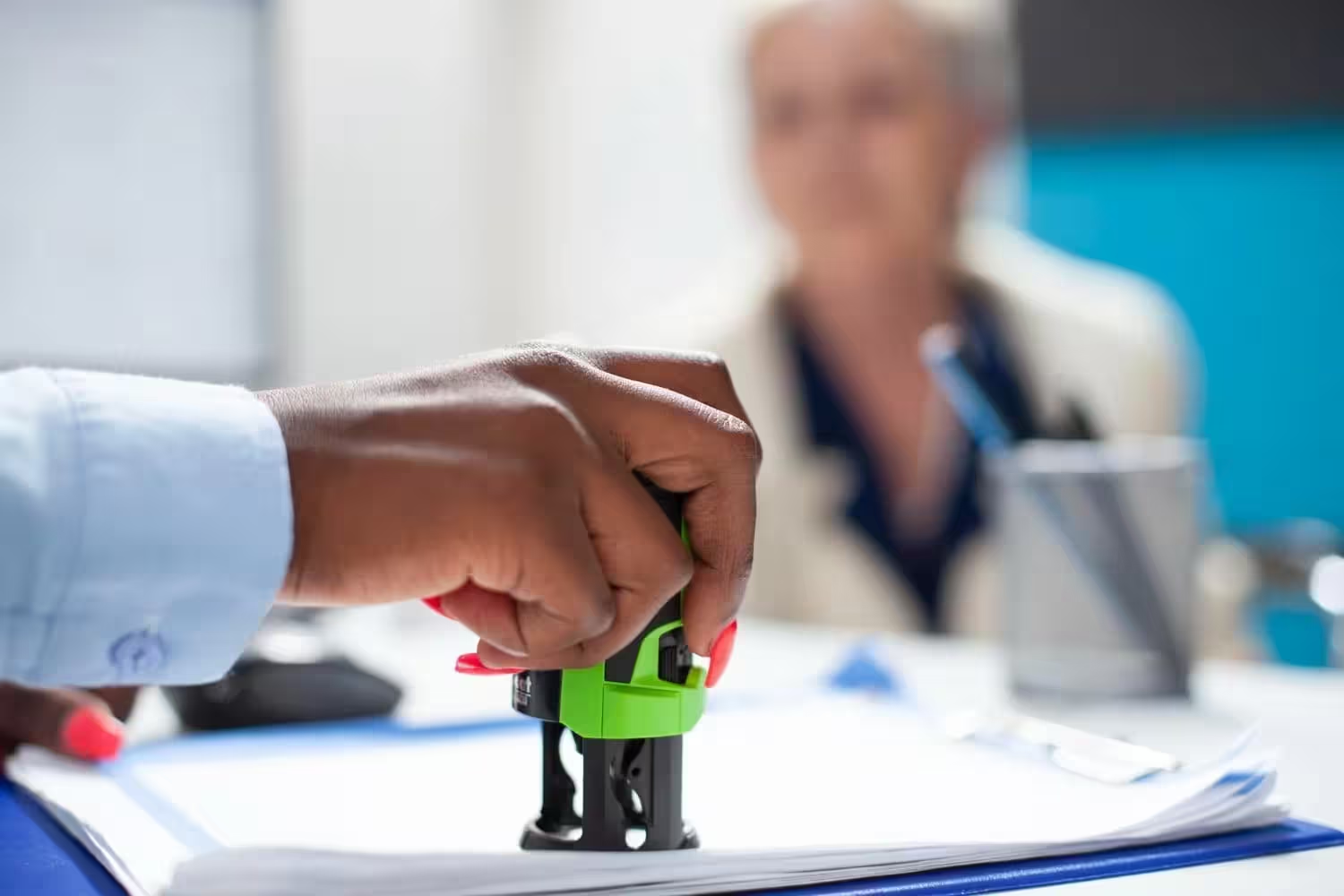
![[ANSWERED] What is a Long-Term Care (LTC) Pharmacy](https://cdn.prod.website-files.com/67e2b8210878abcba6f91ae6/68d687806a075a1cf64659b0_WhatisLongTermCarePharmacy_925.avif)
